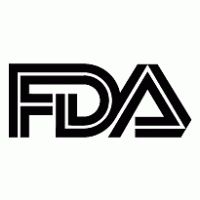Approximately 1 in 10 drugs approved by the US Food and Drug Administration (FDA) since 2018 were supported by pivotal trial data in which primary efficacy endpoints were missed.
In new cross-sectional research assessing 210 new drug approvals by the FDA from 2018 – 2021, a team of US investigators observed that 10% included pivotal studies wherein at least 1 primary endpoint was null based on findings.1 The new data—which come 2 years following the controversial FDA approval of aducanumab (Aduhelm) for the treatment of Alzheimer disease despite underwhelming trial efficacy outcomes2—highlight the need for improved communication and contextualization by the FDA on their regulatory decision making.
Led by James L. Johnston, MD, of the Department of Medicine at Brigham and Women’s Hospital, the New England-based investigators sought to define the frequency of FDA approvals for drugs based on nullified pivotal trial efficacy endpoints, as well as the agency’s rationale for such approvals. They highlighted aducanumab’s controversial approval in June 2021, as well as a history of inconsistent FDA decisions in instances of uncertain drug or device efficacy, as rationale for the study.
Key Takeaways
- 10% of drugs approved by the FDA from 2018-2021 had missed primary efficacy endpoints in their pivotal trial data.
- The cross-sectional study also highlighted the need for improved communication and contextualization by the FDA on their regulatory decision making and greater transparency to improve clinical use and increase clinician, patient, and payer confidence in novel drugs.
- More than half of the 21 drug approvals that included null findings were for first-in-class drug.
- The FDA had rationalized their approval for 13 of these drugs (61.9%) based on the success of other pivotal trials, or highlighted positive secondary or exploratory end points.
“In June 2021, the FDA granted accelerated approval to aducanumab for the treatment of Alzheimer disease despite both pivotal trials being stopped for futility with respect to the primary trial end point: change from baseline clinical dementia rating score,” the team noted. “Instead, FDA approval was based on an exploratory, surrogate marker: amyloid plaque reduction.”
Johnston and colleagues assessed the Drugs@FDA database for all New Drug Applications (NDAs) eventually approved by the FDA between 2018 – 2021; included in each NDA’s approval package is pivotal trial outcome data. They identified drug, pivotal study and end point characteristics for each drug missing ≥1 prespecified primary end point.
The team then characterized the FDA’s expressed rational included in the NDA approval packages, as well as details including whether postmarketing studies were prompted by the agency and whether they addressed unmet primary end points.
Of the identified 210 NDA approvals in the observed time period, Johnston and colleagues observed 21 (10.0%) that included null findings for ≥1 primary efficacy end point; each of the 21 drugs were approved for unique clinical indications. More than half (n = 11 [52.4%]) were first-in-class approvals; 10 (47.6%) previously received an Orphan Drug Designation; 13 (61.9%) received an expedited review pathway from the FDA. Only 3 (14.3%) required an advisory committee meeting prior to FDA approval.
Investigators observed 56 pivotal trials with 74 primary efficacy endpoints supporting the 21 drug approvals—but 5 approvals (23.8%) were supported by a lone pivotal trial. On average were >1 null primary efficacy end point per FDA approval (n = 27).
The team additionally noted 4 drugs were each approved based on a single pivotal study with null results for all its pivotal primary efficacy end points:
- Naxitamab for high-risk refractory or relapsed neuroblastoma
- Tazemetostat hydrobromide for epitheloid sarcoma
- Migalastat hydrochloride for Fabry disease
- Asparaginase erwinia chrysanthemi for acute lymphoblastic leukemia and lymphoblastic lymphoma
The FDA had rationalized their approval for 13 of these drugs (61.9%) based on the success of ≥1 other pivotal trials;they highlighted positive secondary or exploratory end points for 10 approvals (47.6%); and highlighted favorable post hoc analyses in 7 approvals (33.3%).
Investigators noted limitations in their assessment including a singular focus on pivotal trials supporting NDAs, as well as their inability to analyze withdrawn or rejected NDAs due to their unavailability in the FDA’s public database.
However, they concluded their findings “underscore the complexity of regulatory decision-making,” noting the prevalence of drugs approved with null primary end point findings but an overall portfolio evidencing efficacy of the drug.
“For other drugs…the evidence of efficacy was less clear,” they wrote. “Greater transparency regarding FDA decision-making could increase clinician, patient, and payer confidence in novel drugs and improve clinical use.”
They additionally called for more prioritization and timely completion of postapproval trials addressing uncertain areas of clinical efficacy for approved drugs.
References
- Johnston JL, Ross JS, Ramachandran R. US Food and Drug Administration Approval of Drugs Not Meeting Pivotal Trial Primary End Points, 2018-2021. JAMA Intern Med. Published online February 13, 2023. doi:10.1001/jamainternmed.2022.6444
- Hoffman M. Aducanumab Approved for Alzheimer Disease Treatment. NeurologyLive. Published June 7, 2021. Accessed February 15, 2023.
https://www.neurologylive.com/view/aducanumab-biogen-approved-alzheimer-disease-modifying-treatment






